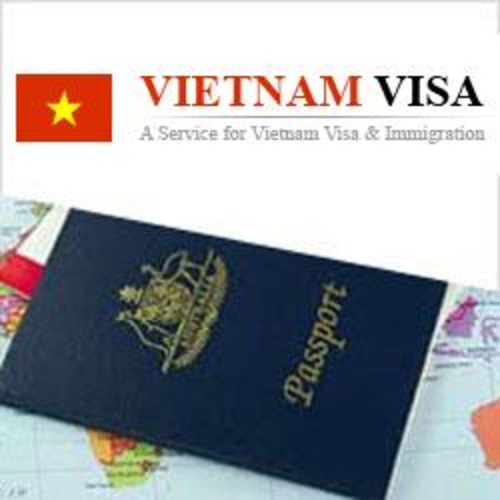Culture and traditions
Through their millenary history, the Vietnamese have worked diligently and fought courageously to build and protect the country. This heroic story began a tradition of solidarity and a rich culture of national identities. It is this tradition and culture that gave the Vietnamese people the strength to overcome all the hardships, overcome foreign aggressors to protect their homeland and to succeed in the work of renewal.
But the era of globalization, the risk of cultural homogeneity is great. The Vietnamese have become fully aware and strongly adhered to the concept of cultural diversity.
Together with national efforts, Amica Travel wants you to discover some aspects of this culture which we are proud.
Worship
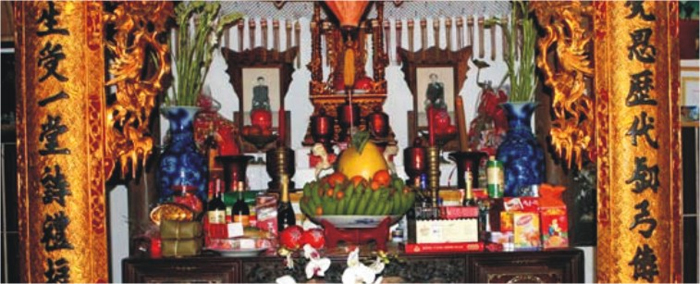
The prevailing spirit of the Vietnamese custom of worship is "When you drink water, think of the source." Subsequent generations are grateful to previous generations.
The people remember with gratitude the heroes who rendered a service to the people, the country of those who invented trades. The man is grateful to Heaven, Earth, and Nature.
The widespread belief is Vietnamese ancestors are worshipped respectfully during Tet(Lunar New Year) with the most solemn manner.
- Some ceremonies and rites of ethnic minorities
Minority ethnic groups have several special ceremonies and rites such as the abandonment of the tomb, the ceremony of worship of the Earth village, etc.
- Ceremony abandonment of the tomb (Bo Ma)
This is a special ethnic ceremony of Gia Rai, Ba Na and E De few years after the death, the ceremony is held for two to five days at the cemetery around the funeral home. This is the last and most important ceremony of funeral rites. It is intended to extend the dead in the other world. After the ceremony, the links between the living and the dead no longer exist. The festivities express a great community spirit in these minority groups.
- Ceremony of worship of the Earth village (The cung Dat lang)
This is the festival of Ba Na living in Kon Tum and Gia Lai . This ceremony takes place at the end of the second lunar month and the beginning of the third lunar month in preparation for a new crop or relocation of a village.
Vietnamese Family
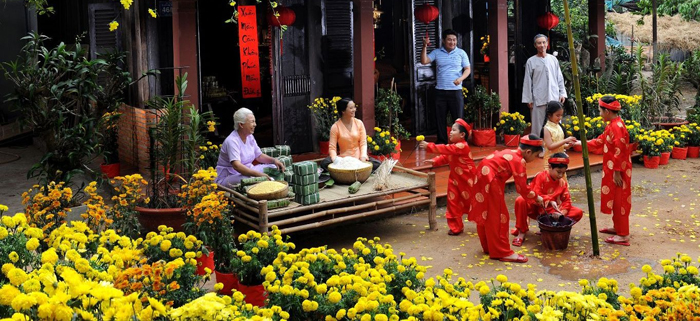
Vietnamese family is patriarchal kind. This organization has been defined by the code of the Hong Duc later in the sixteenth century.
The clan which consists of a number of families descended from a common ancestor does not exceed nine generations. The clan is divided into branches and sub-branches. Allies are not part of the clan. It includes only the direct and collateral branches males, i.e. agnates. It has a common ownership, ancestral temple, located in the house of the chief of the clan kinship.
In principle, the clan leader is the head of the elder branch. But if it dies prematurely, it is replaced either by his eldest son, by the head of the nearest collateral branch. If this edge is minor, he is assisted in his task by the male who by his age, his rank, his relationship and his personality, is the most considerable man of the clan. At the head of each family clan, there is a head of household.
The clan chief is responsible to maintain a kind of family tree which are listed in order of affiliation name of each deceased members of the clan, the name of his wife or wives who gave him boys, their dates of birth and death, his burial and his titles and outstanding service.
It is conceivable that in a poorly structured administratively, some troubled times without order and without clearly defined government peasantry, the individual has found its backup in the family. In Vietnam, as in China, filial piety has been considered as the base under the obligation of an inbred community with all living and dead members are secured to the punishment as rewards for cement. Everyone should make efforts throughout his life, to increase the reputation and prestige of his clan. In Confucianism, miss filial piety was considered one of the six heinous crimes.
Socio -economic conditions today have more or less changed the situation. Individualism and the way most industrialized life have conspired to weaken family ties. But no less remains that for every Vietnamese family (the family) was always something very endearing. That is why we often see families in Vietnam three or four generations. For young people living with parents once you are married is not something to be avoided.
Vietnam wedding
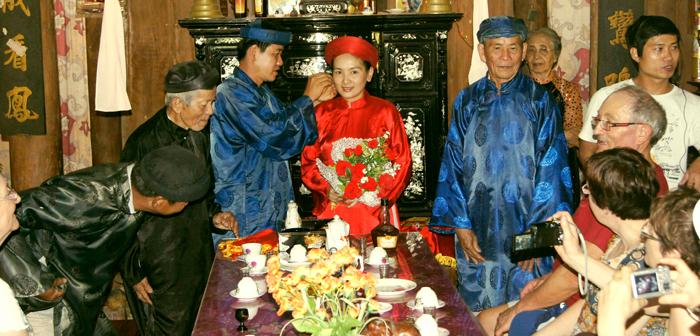
Marriage mentioned in this chapter is the traditional marriage ritual.
Until recently the main purpose of marriage was to perpetuate the name of the clan, its roots and its ancestral worship. It should, therefore, be as early and as prolific as possible and the birth of a child is always good news. Family happiness effect was measured in the number of children they had.
Talks between families who want to combine are almost always entrusted to matchmakers. If they take good turn, they are eight cyclic exchange indicating the hour, day, month and year of birth of the young man and the girl. If the review was unfavorable Horoscope is that the fate of the future couple was nice to be husband and wife. We then performed three essential rites: the marriage, betrothal and marriage.
For the marriage, the family of the bridegroom sends a small delegation (consisting of one parent and some members of the clan) who visits the family of the bride. The meeting between the two families is the opportunity to know, check the consent of each and to develop terms of two rites.
For engagement, another delegation of the family of the bridegroom is sent to the family of the bride, bringing offerings for the worship of the ancestors of the latter. Indeed, we consider that it is necessary to require not only the consent of the parents of the bride, but also that these dead ancestors. The offerings vary from one region to another, but must necessarily include some of betel, areca, a little rice wine and incense sticks.
Marriage is a private double ceremony before the altar of the ancestors of the family of the bride and that of the groom. The day after the wedding takes place the "visit the second day" (LAI MAT) in the bride's parents, which provides an opportunity for the groom to pay tribute to those who gave birth to his wife.
Nowadays, cohabitation becomes the watchword of the young and free consent a condition of marriage imposed by the legislature; however, the family still plays an important role in marriage.
Traditional rites and family described above indeed continue to be the main steps of a socially acceptable marriage and divorce. The desired and established through centuries by Confucianism family structure cannot disappear, despite overnight modernism and growing individualism
The names of Vietnamese
The full name of a Vietnamese typically consists of three elements: the name, the familiar post- name (or name) and added word (or insert name)
The surname usually amounts on behalf of the clan to which the individual belongs . There are more than 200 Vietnamese clan names. The vast majority of families (85%, according P.Gourou) have the following twelve names: Nguyen, Tran, Le, Pham, Vu, Ngo, Do, Hoang, Đào, Đang, Duong and Đinh.
Traditionally, every child bears the surname of his father. But at the time of gender equality, many couples choose to give their names to the child, the father's name preceding the name of the mother. Thus, many people who call themselves "NguyễnTrần.... "or" Lê Phạm…
The familiar post- name refers to women, names of rivers, trees, birds, seasons, and of precious things, for men, the names of abstract virtues. Examples of female post- names: River ( Ha ), Chrysanthemum (CUC), Rose( Hồng), Lys ( Hue), Willow (place), Emerald ( Ngọc ) Perfume ( Huong ), Autumn( Thu). Examples of male - post names: Courage (Dũng) Power(Manh ) Vertu( Duc ), Modesty ( Khiem )...
Promotion
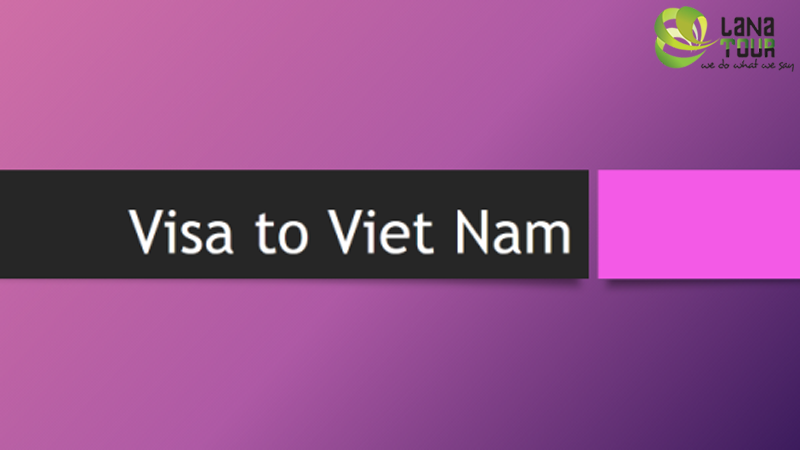
Free Visa Upon Arrival Letter
Are you going to Viet Nam next months? Don't you know how to get the visa? Don't worry about that because we can take care of this. Only one thing you have to do is sending us your copy of your passerport.
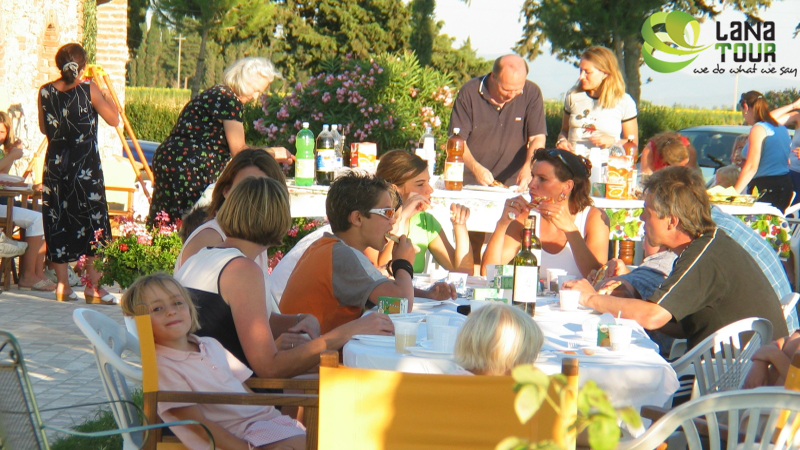
The Best Offer for Family
An idea circuit from North to South Vietnam through its beautiful sights, with a moderate rythm, the variety of activities for children, good accommodation for family.
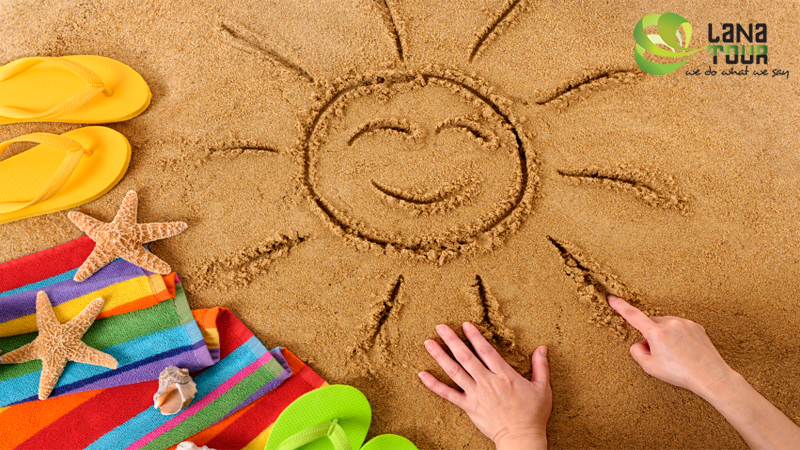
Summer Promotion
Summer is a great time to travel, to enjoy the beautiful beach but traveling with many attractive offres is a great thing even better. Please see below our special promotion for your summer trip


